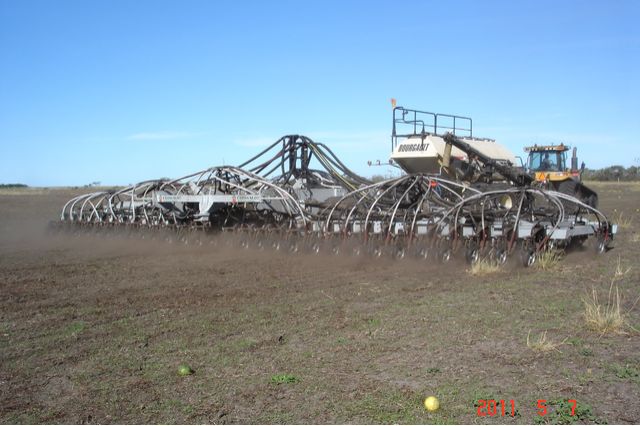Recycling Carbon
Written by Dr John Baker and Dr Craig Ross | |
New Zealand sows about one million hectares of new pastures and crops each year. If all of this was undertaken by low-disturbance no-tillage with full residue-retention, the net emissions of carbon dioxide from the soil would be reduced by about 9.2 million tonnes, according to Ghatohra’s research1 . In fact, the soil would gain about 0.5 million tonnes of new carbon (equivalent to 1.8 million tonnes of carbon dioxide (CO2) per year. According to the Ministry for the Environment latest figures2 New Zealand’s total net emissions of GHGs, as of 2015, was 80.2 million tonnes of CO2 -equivalent, of which 48% or 38.4 million tonnes was from agriculture. Applying Ghatohra’s research to these figures we have calculated that no tillage could offset about 11% of New Zealand’s total net GHG emissions and 24% of agriculture’s. Although it is gathered from the atmosphere, carbon is one of the most essential nutrients of plants. Returning that recaptured-carbon to the soil would not only take some pressure off the need to reduce other GHG emissions but it would also rebuild soil organic matter levels. With that comes improvement in soil health and crop yields, which have deteriorated over time under conventional tillage. Ghatohra’s research at Massey University in 2012 showed that sowing agricultural seeds by low-disturbance no-tillage (summer barley followed by winter forage or cover crop, with full residue-retention) could recapture about 1.8 tonnes/ha/yr of carbon dioxide gas from the atmosphere and sequester this back into the soil as solid or liquid carbon. Continuing to till the soil, on the other hand, results in a net carbon dioxide discharge of about 7.4 tonnes/ha/yr. The low-disturbance no-tillage process and rotation can therefore be regarded as carbon-positive as far as the soil is concerned, whereas conventional tillage is always carbon-negative. In New Zealand, one tonne of harvested grain usually leaves about one tonne of crop residue behind. This is a resource that we have only recently realised the true value of – not just as a relatively modest source of nutrients, but also as a rich source of recyclable carbon.
Recapturing carbonThe process of recapturing atmospheric carbon dioxide gas is based on photosynthesis, which is a fundamental function of all green plants. Photosynthesis converts CO2 gas from the atmosphere into solid or liquid compounds of carbon such as plant carbohydrates. Getting the re-captured carbon back into the soil involves three main farm processes: 1. Leaving the residues of dead or dying pastures and crops (including the straw, stubble and dead roots of harvested crops, or entire cover crops, all of which contain about 40% carbon) to decompose on the soil surface where earthworms and other soil fauna incorporate it into the soil free of charge. 2. Allowing the roots of growing crops to transfer some of the carbon directly into the soil as root exudates. 3. Passing the living vegetation through farm animals, which excrete a proportion onto the soil as carbon-rich dung, even though cows also belch some of it directly back into the atmosphere as methane gas.
|

 Emphasis today is strongly on reducing all of agriculture’s Green House Gases (GHG), which include carbon dioxide (CO2), nitrous oxide (N2O) and methane (CH4). However, few people realise that farming also holds several keys to recapturing a significant amount of, at least, the CO2 emissions from all sources - CO2 being the most prevalent of the three GHGs. The extent to which soil is disturbed during the ground preparation and seeding process oxidises soil carbon that escapes into the atmosphere as CO2.
Emphasis today is strongly on reducing all of agriculture’s Green House Gases (GHG), which include carbon dioxide (CO2), nitrous oxide (N2O) and methane (CH4). However, few people realise that farming also holds several keys to recapturing a significant amount of, at least, the CO2 emissions from all sources - CO2 being the most prevalent of the three GHGs. The extent to which soil is disturbed during the ground preparation and seeding process oxidises soil carbon that escapes into the atmosphere as CO2..jpg)